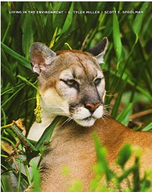Science
Living in the Environment: Principles, Connections, and Solutions 17th Edition solutions
Author: G. Tyler Miller, Scott Spoolman
Publisher: Cengage Learning
ISBN: 9780538735346
Buy the book
Select Chapter:
